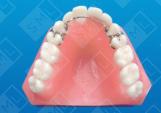
Implant Services
When creating a treatment plan for a patient who is missing teeth, it is essential to offer the patient all options available to help restore them to ideal function. This may include a denture, a partial denture, a fixed bridge, implants, or numerous interim fixed and removable appliances. Today, it is considered the standard of care to offer the implant option to patients when they have lost a tooth. In fact, implantology remains one of the fastest growing fields in dentistry.
Placing and restoring an implant requires planning. Because there are both surgical and prosthetic considerations, it is critical that the restorative dentist and surgeon work together to properly plan its placement. Not doing so will lead to failure.For an implant to succeed, it must have excellent bony support and be placed in a position where the occlusal forces brought to bear will be ideal. The most common mistake made is placing an implant in a position that causes it to constantly bear abnormal occlusal forces. To prevent this, pre-prosthetic surgical planning is a must. Many appliances are now available to help you plan for ideal implant placement.
Select another Appliance Category

















